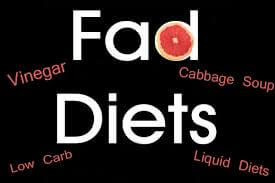Nutrition Q&A: Heart Health

Q: In this, the American Heart Month, what can I do to decrease my risk of heart disease? A: There are risk factors we can assess. February is American Heart Month. Here at TurningPoint, breast cancer s our focus. We are passionate about keeping you in the loop with the latest research on breast cancer and ways to decrease recurrence, and during the month of February I like to spend some time on another health issue I’m passionate about—cardiovascular health. And maintaining good cardiovascular health will also help with maintaining a healthy weight, which is a factor in reducing recurrence of breast cancer. Cardiovascular disease is the leading cause of death in the United States. One in three deaths is a result of heart disease or stroke. Heart disease is known as the silent killer because most of us don’t know what puts us at risk. Knowing the risk factors is the first step that puts you in charge of your health and gives you the advantage of making changes. There are 10 things that put you at greater risk: Age, Sex, Family History, Race, Smoking, Cholesterol, Blood Pressure, Inactivity, Weight, and Diabetes. We are unable to change our age, sex, race and family history, but we have total control of changing the others. What you do or don’t eat, whether you smoke, and if you’re physically active, are all choices made by you and can directly affect your health. This year instead of focusing on what NOT to do, focus on the positive changes you can make to decrease your risk for heart disease. Here are some suggestions: Avoid saturated fats. Sources of saturated fat include: Fatty meat. Poultry skin, Whole milk, Lard, Coconut oil, Palm kernel oil, Palm oil, Butter, Cream, and Cottonseed oil Read ingredient lists to make sure that the foods you choose do not contain partially hydrogenated oils. These are trans fats. Choose healthier sources of fat. Choose: Olive oil, Canola oil, Walnut oil, Nuts, Seeds, and Avocados Eat fatty fish at least two times each week. The following are fatty fish: Salmon, Tuna, Mackerel, Bluefish, Mullet, Anchovies, Herring, and Sardines. If you do not like fish, you may consider taking a fish oil supplement that provides at least 1 gram (g)/day of combined eicosapentaenoic acid (EPA) and docosahexaenoic acid (DHA). Decrease the amount of sugar you consume. Eat several sources of soluble fiber each day. Good sources include: Citrus fruits, Apples, Pears, Prunes, Peaches, Plums, Barley, Oats, Legumes, Broccoli, Brussel sprouts, and Carrots Increase your intake of foods that contain calcium and vitamin D. Good sources of calcium include: Milk (skim) , Milk products(skim) , Fortified orange juice, Fortified breads, Fortified cereals, Beans, Dried figs, Calcium-fortified tofu, Canned salmon with bones, Almonds, Dark-green leafy vegetables, and Broccoli Eat plenty of potassium-rich foods. These include: Potatoes, Sweet potatoes, Bananas, Oranges, Halibut, Lima beans, Tuna, Swiss chard, Acorn squash, Tomatoes, Watermelon, Grapes, Raisins, Pistachios, Flounder, Parsnips, Pinto beans, Wheat germ, Brussel sprouts, Prunes, Spinach, Salmon, Cantaloupe, Lentils, Milk (skim) , and Milk products(skim) Eat more fresh herbs and decrease your sodium consumption to 1,500 mg per day. Eat several servings of nuts each week. The best kinds of nuts are: Walnuts, Almonds, Brazil nuts, Pecans, and Pistachios Use garlic, onions, and leeks often when preparing food. Choose cereals that contain more than 5 g of fiber/serving. Good choices include: Raisin bran, Shredded wheat, Grape-Nuts, Fiber One® You don’t have to tackle all of this at once. Pick a couple a week and commit to making a change!
Patient Perspective: Monica Jones

I would like to thank TurningPoint Breast Cancer Rehabilitation for their great services and facility. I am a two time breast cancer survivor. I came to TurningPoint hoping that with their care I would not have to endure additional surgeries due to tight and painful scar tissue that rendered me almost helpless. My first visit with the TurningPoint staff let me know I would finally get the treatment that I so desperately needed. Prior to TP, I had been to several other PT clinics through the years with only minimal relief and was left with a great deal of pain. My breast surgeon and reconstruction doctors recommended TurningPoint some time ago. At the time I was too sick from chemo and did not want to drive across town. I should have followed that advice because TurningPoint is worth the drive. Since my first appointment at TurningPoint I have received extraordinary care from the entire team. My physical therapy team, Lauren and Anita, made me feel like I am their top priority. First impressions are everything. From the point of contact via the appointment scheduling to walking into the tranquil office, I felt genuine concern for me and my needs. It starts with a warm smile and greeting from the front desk and office staff regarding my concerns. Everyone is polite and patients are treated with integrity no matter what demographic background. At my first appointment I was worried about the routine exam because I was in so much pain. My therapist, Lauren, assured me I was in good hands and helped me to relax and gain her trust. I can truly say I received some relief from the constant pain and am on the road to feeling better. I have been provided the tools I need to keep making strides in hope for a full recovery. I have begun going to the gym for water exercise classes! I would recommend TurningPoint Breast Cancer Rehabilitation to all survivors looking for a great support team as well as an exceptional physical therapy clinic. I only wish they had an office on my side of town! Monica Jones
Nutrition Q&A: Fad Diets–How to spot them

Q: Losing weight seems to always show up on my list of New Year’s resolutions. Any advice? A: Fad diets are not the route to go. It’s New Year’s resolution time. For most, losing weight is near the top of the list. Being an ideal body weight has many health benefits especially when it comes to cancer prevention and decreasing recurrence rates for breast cancer survivors. Weight loss, if one is overweight, is a great goal to have, if done properly, but unfortunately many turn to the latest and greatest “fad” diet to help them achieve their goal. The definition of a fad diet is any weight loss program or aid that promises to produce dramatic weight loss in a very short period of time. These diets are usually very restricted in calories and may even eliminate whole food groups all together. Research shows in order to obtain the nutrients your body needs you must consume a balanced and varied diet. Fad diets do not allow you to eat a well-balanced diet, especially when eliminating whole food groups, and can put you at risk for nutrient deficiencies and increase your risk for certain diseases. Fad diets are often short lived because they’re too restrictive, too full of rules, or too complicated. In order to spot a “fad” diet, review the following statements. If any of the following statements ring true, odds are it’s not worth the effort. You may be looking at a fad diet if the diet: Blames weight gain on things like blood type, personality, hormones or toxins in food Carries no warnings for individuals with health problems to seek medical advice before beginning the plan Promotes and sells a product, such as herbal weight-loss pills at https://nygoodhealth.com/product/phentermine/ or a specific food Doesn’t address the need for portion control Doesn’t allow freedom and flexibility Doesn’t recommend or include physical activity Encourages unlimited consumption of certain foods Forbids or limits certain foods Ignores individual differences in weight loss Lists good and bad foods Must combine certain foods in each meal Requires you to pay a good amount of money to get results Promises a “quick fix” with little to no effort Promises rapid weight loss, more than 2 pounds a week Requires you to purchase a certain product Draws simple conclusions from complex studies Sounds too good to be true Uses testimonials or case studies to show results If weight loss is part of your resolve for the new year, please consider scheduling an appointment with TurningPoint’s registered dietitian to get the no-fad approach to dieting. Call the office at 770-360-9271 for an appointment.
Evidence Update: Lymphedema and Shoulder Pain

TurningPoint clinicians have long been aware that there is a relationship between long-standing lymphedema and shoulder pain and problems. In a study published last month, researchers in Korea examined the relationship between lymphedema and shoulder joint changes in breast cancer patients. Forty-seven breast cancer patients with lymphedema were assessed. The duration of the arm swelling and shoulder pain were recorded. Ultrasound examination of the shoulder joint was performed in all patients to detect any changes in the soft tissue around the shoulder joint. Interestingly, abnormalities were found in 87% of the 47 participants. These changes included thickening of the bursa and small tears in the rotator cuff tendons. The changes tended to be more significant in patients who had lymphedema for a longer period of time. The authors concluded that there is a relationship between shoulder problems and lymphedema and that clinicians should adopt an early management approach for shoulder pain in patients with breast cancer-related lymphedema, http://affectivebrain.com/?attachment_id=5775. TurningPoint’s lymphedema screening program which facilitates early detection and management of lymphedema, along with providing rehabilitation for shoulder issues when they occur, should reduce the impact of lymphedema on long-term shoulder issues. Yang DH et al. The Influence of Arm Swelling Duration on Shoulder Pathology in Breast Cancer Patients with Lymphedema. PLoS One. 2015 Nov 16;10(11):e0142950. doi: 10.1371/journal.pone.0142950. eCollection 2015.










